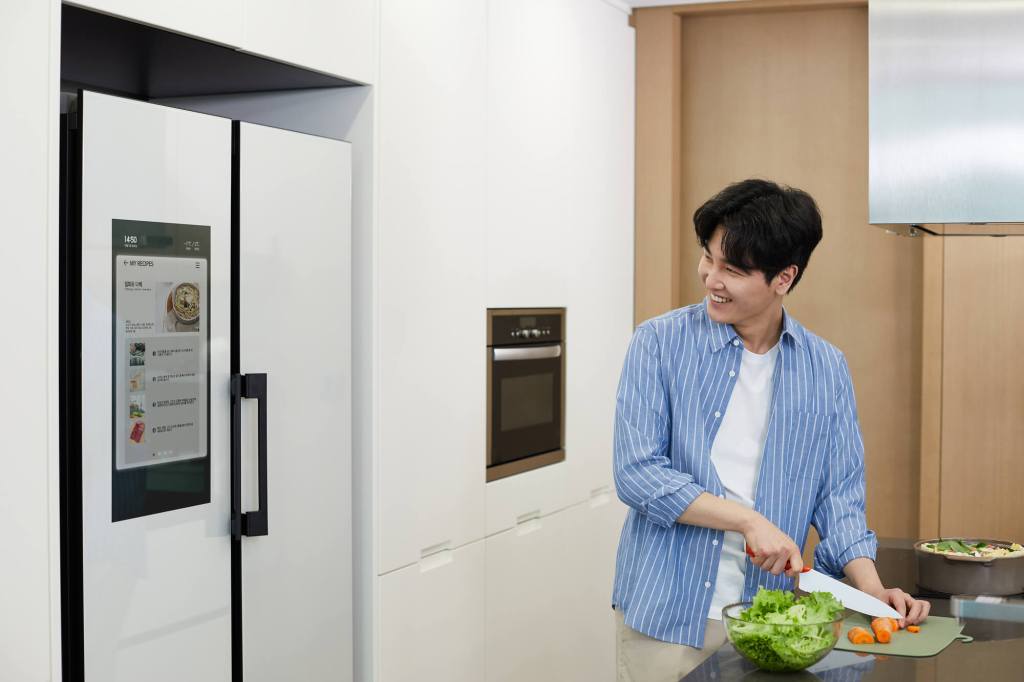2025 total T&D full-year projection (value growth):
- North America: +0% (flat)
2026 home appliance projections (value growth):
- MDA: +0.4%
- SDA: +1%
North America market overview
In North America, we expect moderate growth in major and small appliance sales value in 2026, following a flat 2025.
Major home appliance sales value will be supported by sustained demand driven by replacements, potential interest rate cuts in late 2025, and exchange rates, which continue to provide an upward push on US dollar numbers. In volume and value terms, expiring federal tax credits for individuals installing more environmentally friendly air conditioning and refrigeration will put downward pressure on sales, and we expect small growth in 2026.
In small home appliances, we expect slower but steady growth. As inflation eases, sales will likely rebound. In addition, factors such as smaller living spaces and increasing demand for appliances with more premium feature sets will continue to drive sales growth.
What will drive North America sales growth in 2026?
By appliance type
In major home appliances, we expect some replacement cycles to kick in for items such as dishwashers, refrigerators, and air conditioners, while other appliances may not see replacement peaks until at least 2028. Demand for products with energy-efficient eco modes (given increasing power costs in the US), as well as more recycled or recyclable materials, will also drive sales of greener appliances.
In small home appliances, replacement cycles are kicking in across the category following pandemic-era purchases. Shavers and hairdryers will benefit from continued increases in personal care sales. Consumer focus on health factors will drive demand for smart air purifiers, steam cleaning, steam cooking, and air fryers (the latter also prompted by time savings), along with dental care products with diagnostics or hygiene-enhancing features.
By channel
Online channels will continue to have a strong presence across categories, especially in small appliances, where they can win with lower price points. In addition, new brands in the personal care space and beyond are acting as digital-first businesses—since it’s easier and cheaper to set up a website than an in-store presence—driving traction online.
Growing consumer engagement with social commerce will continue in 2026. While currently focused around Beauty FMCG categories, there is opportunity here for small home appliances with visual appeal—such as personal care appliances or hot beverage or frozen desert makers—that lend themselves to being reviewed by influencers.
In-store will continue as a significant channel for all home—but particularly large—appliances, enabling consumers to experience products more easily.
Promotions will remain important across channels, as North American consumers are increasingly timing their purchases to align with popular promotional windows so they can access premium features at lower prices.
North America key takeaways for 2026
- In major home appliance sales, manufacturers and retailers should aim to capitalize on early replacement cycles on dishwashers, refrigerators, and air conditioners, presenting the long-term benefits of products that offer greater energy savings and more convenience.
- The industry should appeal to consumer trends by doubling down on smart innovation, such as AI-driven energy savings and eco-friendly materials.
- In small home appliances, health, hygiene, and convenience will be the strongest drivers.
- Product promotions should be timed around the big annual promotional events—and harness social commerce—to capture value-conscious buyers looking to make the most of their spending by buying premium products at a discount.
Get the full global picture
Go to our Home Appliances Outlook 2026: What consumers want report.
NIQ’s home appliances market expert, North America

Steffen Schenk
Managing Director, T&D, North America
Forward-Looking Statements Disclaimer
This report may contain forward-looking statements regarding anticipated consumer behaviors, market trends, and industry developments. These statements reflect current expectations and projections based on available data, historical patterns, and various assumptions. Words such as “expects,” “anticipates,” “projects,” “believes,” “forecasts,” and similar expressions are intended to identify such forward-looking statements. These statements are not guarantees of future outcomes and are subject to inherent uncertainties, including changes in consumer preferences, economic conditions, technological advancements, and competitive dynamics. Actual results may differ materially from those expressed or implied in these statements. While we strive to base our insights on reliable data and sound methodologies, we undertake no obligation to update any forward-looking statements to reflect future events or circumstances, except to the extent required by applicable law.




